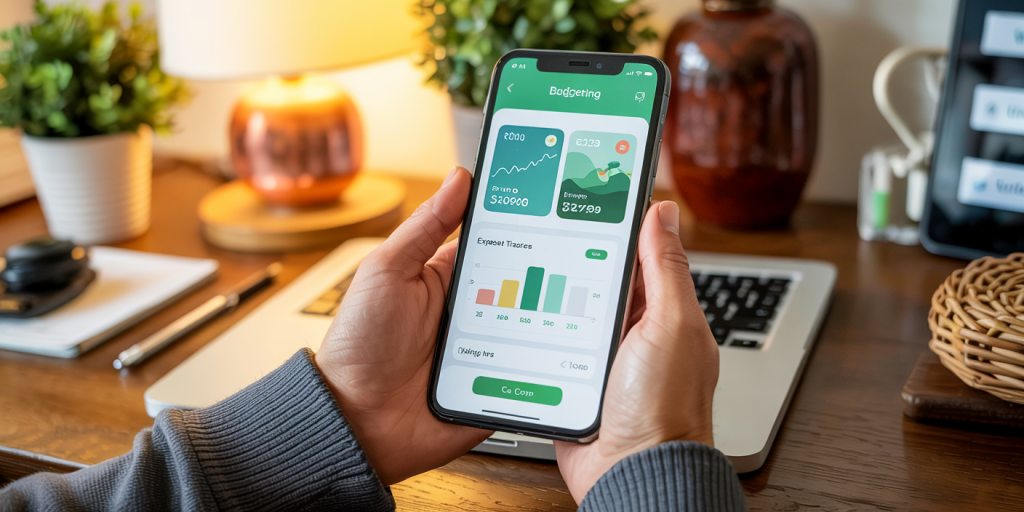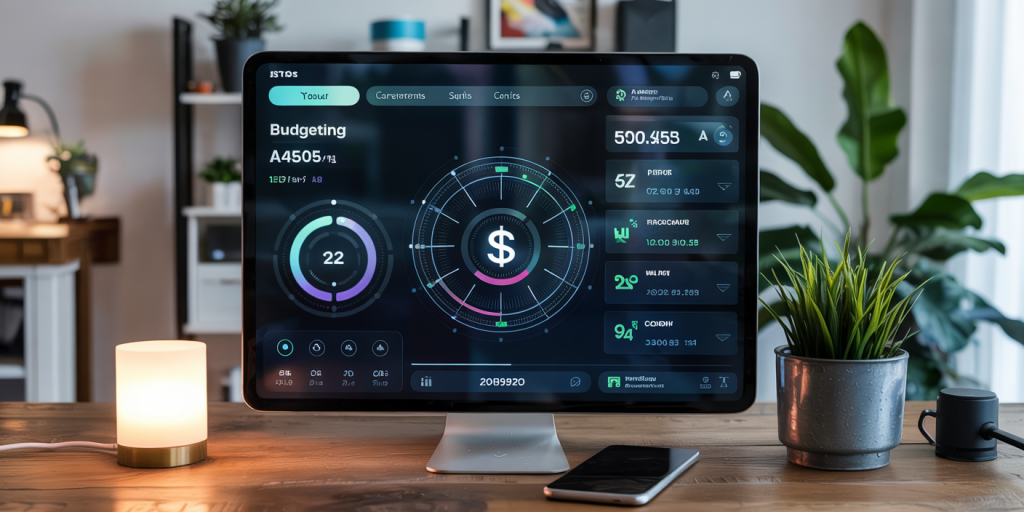Top 10 Free Budgeting Apps to Take Control of Your Money
In an era where financial literacy and money management hold critical importance, budgeting apps have emerged as indispensable tools for individuals seeking greater control over their finances. With multiple options saturating the app market, selecting the right free budgeting app can feel overwhelming. However, understanding key features such as real-time expense tracking, bill alerts, and financial goal setting allows users to pinpoint an app that suits their needs seamlessly.

Recent studies reveal that nearly 60% of Americans live paycheck to paycheck, underscoring a dire need for effective budgeting tools (Federal Reserve, 2023). Free budgeting apps democratize financial management by offering accessible, intuitive platforms without demanding costly subscriptions. Whether you’re a college student aiming to avoid overspending, a freelancer balancing erratic income, or a family striving to save for future goals, these apps provide practical solutions suited to various financial habits.
—
Why Free Budgeting Apps Are Essential for Financial Wellness
Developing a habit of budgeting is critical to achieving financial stability, but manually tracking income and expenses can be cumbersome and error-prone. Free budgeting apps automate this process, linking bank accounts and credit cards securely to provide instant snapshots of spending patterns. For instance, apps like Mint update transactions in real time, alerting users when they exceed budget limits or miss bill payments, reducing reliance on memory and manual calculations.
The psychological impact of budgeting apps is equally important. Data from a 2022 study by the National Endowment for Financial Education indicates that individuals who use digital budgeting tools are 40% more likely to report lower financial stress. Furthermore, apps encourage goal-oriented savings by visualizing progress, such as saving for a vacation or emergency fund, increasing motivation. This combination of automation and behavioral nudges transforms budgeting into a manageable, constructive routine that improves overall money discipline.
—
Top 10 Free Budgeting Apps: Features and Benefits
Here is a detailed review of the top 10 free budgeting apps offering unique benefits designed to cater to a broad spectrum of users. Each app is evaluated based on user-friendliness, security, features, and customer satisfaction.
| App Name | Core Functionality | Best For | User Rating (out of 5) | Platforms | Security Features |
|---|---|---|---|---|---|
| Mint | Expense tracking, bill alerts | Beginners, comprehensive view | 4.5 | iOS, Android, Web | 256-bit SSL, multi-factor auth |
| YNAB (You Need A Budget) | Real-time budgeting, goal tracking | Strict budgeters, debt payoff | 4.7 | iOS, Android, Web | Bank-level encryption |
| PocketGuard | Budget automation, spending limits | Quick overview, control spend | 4.3 | iOS, Android | Two-factor authentication |
| Goodbudget | Envelope budgeting method | Couples, shared budgets | 4.2 | iOS, Android, Web | Data encryption |
| EveryDollar | Zero-based budgeting | Simplicity, manual input users | 4.1 | iOS, Android, Web | Secure login, limited access data |
| Personal Capital | Budgeting + wealth management | Investors, long-term planners | 4.4 | iOS, Android, Web | Multi-factor authentication |
| Wally | Expense tracking, multi-currency support | Global users, freelancers | 4.0 | iOS, Android | Encrypted data transfers |
| Clarity Money | Subscription cancellation tools | Streamlining expenses | 4.1 | iOS, Android | Bank-grade security |
| Simple | Integrated checking and budgeting | Banking + budgeting in one | 4.2 | iOS, Android | FDIC insured, encrypted data |
| Mvelopes | Digital envelope budgeting | Cash lovers, manual budgeters | 4.0 | iOS, Android, Web | Data encryption and secure access |
—
Exploring the Benefits of Mint and YNAB for Beginners and Experts
Mint is often considered the gold standard free budgeting app for beginners due to its intuitive interface and comprehensive capabilities. The app automatically categorizes transactions, offers bill reminders, and generates custom budgets based on spending habits. A practical example is a college student who uses Mint to track daily coffee purchases, dining expenses, and textbook costs, receiving alerts when a budget category approaches its limit. Mint’s ability to highlight subscriptions and recurring bills helps users identify unnecessary expenses, such as seldom-used streaming services, saving money over time.
By contrast, YNAB (You Need A Budget) is favored by financial enthusiasts who prioritize active budgeting, especially those focused on debt repayment or building robust savings. Unlike Mint’s passive tracking, YNAB requires users to assign every dollar a job, promoting intentional spending. Consider a freelancer with inconsistent income who uses YNAB to plan month-to-month expenses ahead, allocating funds for irregular bills such as quarterly taxes. The app’s educational resources and community support amplify user success, demonstrating a reported 75% reduction in unsecured debt after six months among active users (YNAB, 2023).
—
How Envelope Budgeting Apps Like Goodbudget and Mvelopes Foster Discipline
Envelope budgeting is a classic method revitalized by apps like Goodbudget and Mvelopes, helping users physically separate funds for different expense categories. This visual and tangible approach prevents overspending by enforcing limits predetermined in each envelope. For example, a married couple working toward saving for a house down payment might use Goodbudget to allocate monthly groceries, utilities, and entertainment expenses into separate envelopes accessible on their shared phones. This collaboration enhances transparency and accountability.
Similarly, Mvelopes offers a fully digital version where users can sync bank accounts and create customizable envelopes, receiving real-time updates on remaining funds. Case in point: A user struggling with impulse purchases found that digitally “closing” an envelope once depleted discouraged continued spending. Research supports this as envelope budgeting users experience a 30% better adherence to budgets compared to traditional methods (Journal of Behavioral Finance, 2022). These apps cater well to those who benefit from tangible financial boundaries and shared budget management.

—
Specialized Budgeting Apps for Targeted Financial Needs
Certain free budget apps focus on niche needs beyond general budgeting. PocketGuard excels with its “In My Pocket” feature, which calculates disposable income after bills and savings, ideal for users needing quick decisions on discretionary spending. For instance, a gig economy worker can use PocketGuard to determine how much can be safely spent after setting aside money for taxes and irregular expenses.
Personal Capital combines budgeting with wealth management, designed for users who want a unified picture of day-to-day expenses and investments. Long-term planners can monitor their net worth, 401(k) progress, and spending side-by-side. A retiree aiming to maintain spending within sustainable limits may use Personal Capital to balance lifestyle needs with retirement portfolio longevity. Similarly, Wally’s multi-currency feature aids travelers and international freelancers in budgeting across borders, converting expenses in real time to a home currency, enriching financial oversight in a globalized economy.
—
A Comparative Look at Security and Privacy Standards
Given that budgeting apps handle sensitive financial data, security remains a paramount consideration. Most top-tier free apps employ robust protocols such as 256-bit SSL encryption, multi-factor authentication, and biometric login options to safeguard user data. Mint and Personal Capital are particularly notable for their bank-level security standards. Further, these apps rarely store login credentials on devices, minimizing vulnerabilities in case of phone loss or theft.
Privacy policies vary regarding the use of aggregated data for marketing purposes. For example, Mint’s business model integrates ad targeting based on user finance behaviors, which might concern privacy-conscious users. Apps like YNAB and Goodbudget offer more transparent policies with limited data sharing, emphasizing user control. A practical case involved an app user switching from PocketGuard to YNAB due to concerns over anonymized data being used for third-party offers. Therefore, users are advised to review privacy terms to ensure alignment with personal comfort levels concerning data usage.
—
Future Trends in Budgeting Apps: What to Expect
As technology advances, budgeting applications are evolving beyond static expense tracking to incorporate artificial intelligence (AI) and machine learning for predictive financial analytics. Future iterations promise smarter suggestions tailored to individual spending habits, such as automatically optimizing subscription plans or advising on investment opportunities suited to a user’s financial profile.
Another trend is the increased integration of budgeting apps with broader financial ecosystems, including tax preparation software, credit score monitoring, and personalized financial coaching. Incorporating gamification elements to maintain user engagement and improve money management habits is also gaining traction. For example, users may earn badges or rewards for consistently staying within budgets or achieving savings milestones, appealing to behavioral motivators.
Moreover, enhanced cross-device syncing and voice-command features will add convenience, with apps integrating seamlessly with smart home devices or virtual assistants. Such progress anticipates a future where budgeting is an active, interactive process embedded in everyday life, enabling wider demographic reach and improved financial outcomes globally.

—
Overall, free budgeting apps empower users by providing accessible, efficient tools for controlling their money in real time. Whether starting with straightforward expense tracking or progressing toward sophisticated financial planning, these apps adapt to diverse personal finance journeys. Selecting the right app depends on individual needs—whether automated convenience, strict envelope budgets, investment insights, or security priorities. By leveraging these digital companions, users worldwide can build healthier financial habits and unlock greater fiscal security.
